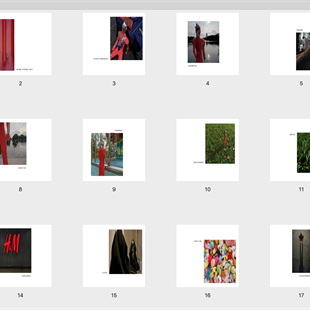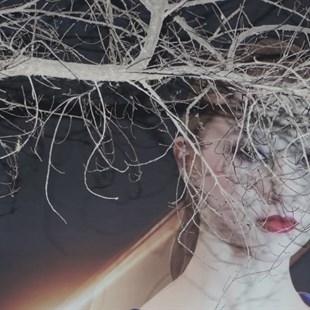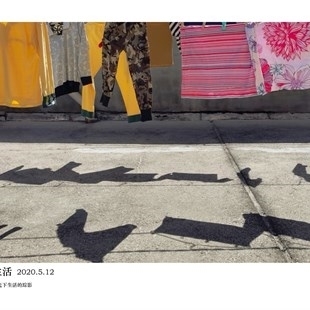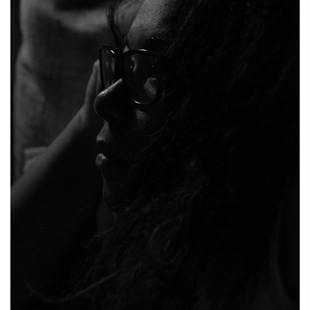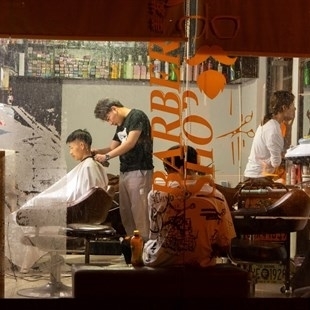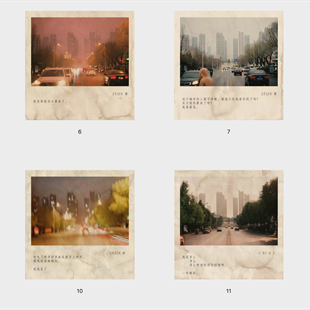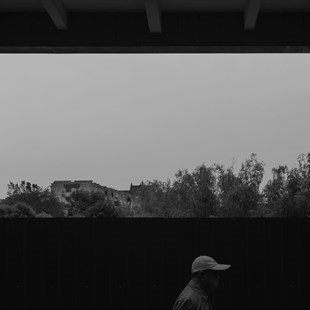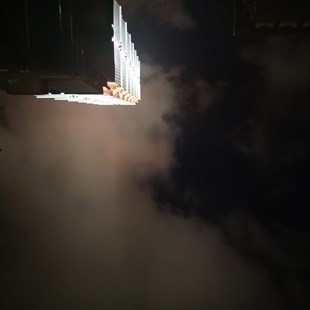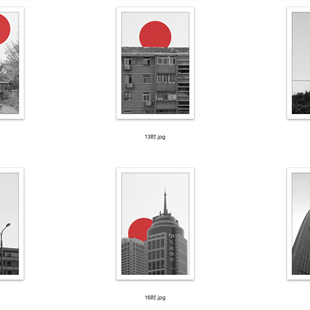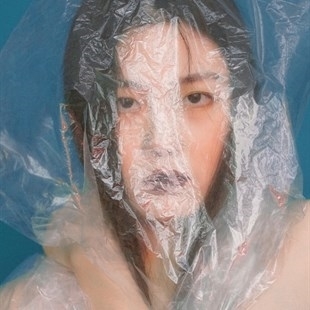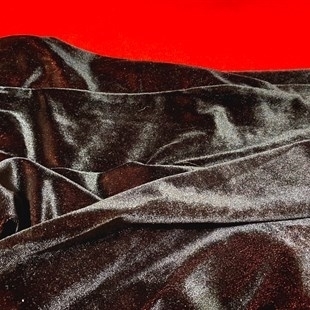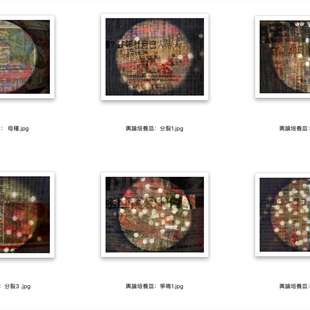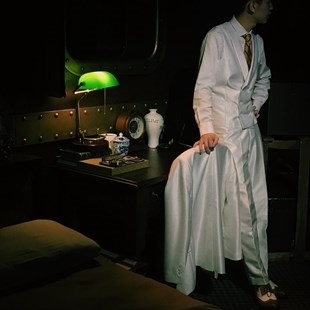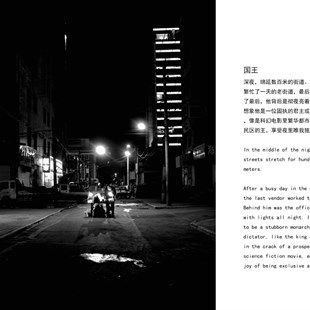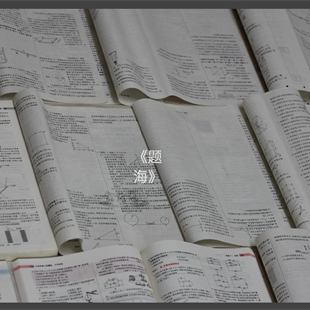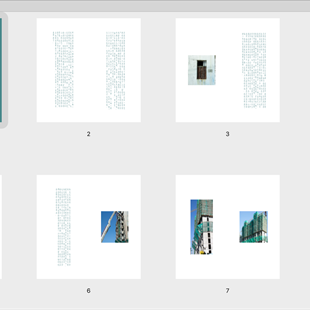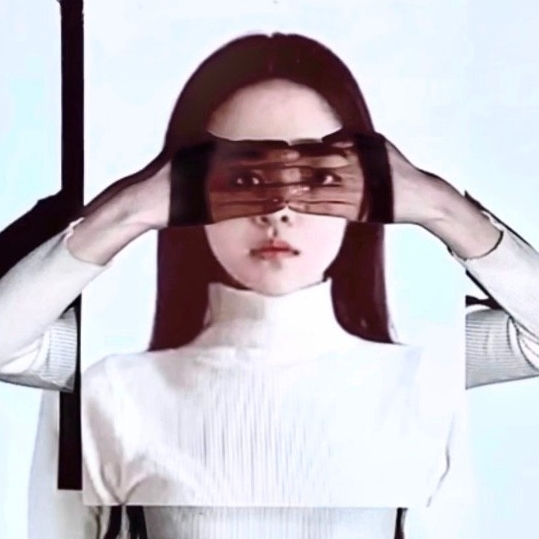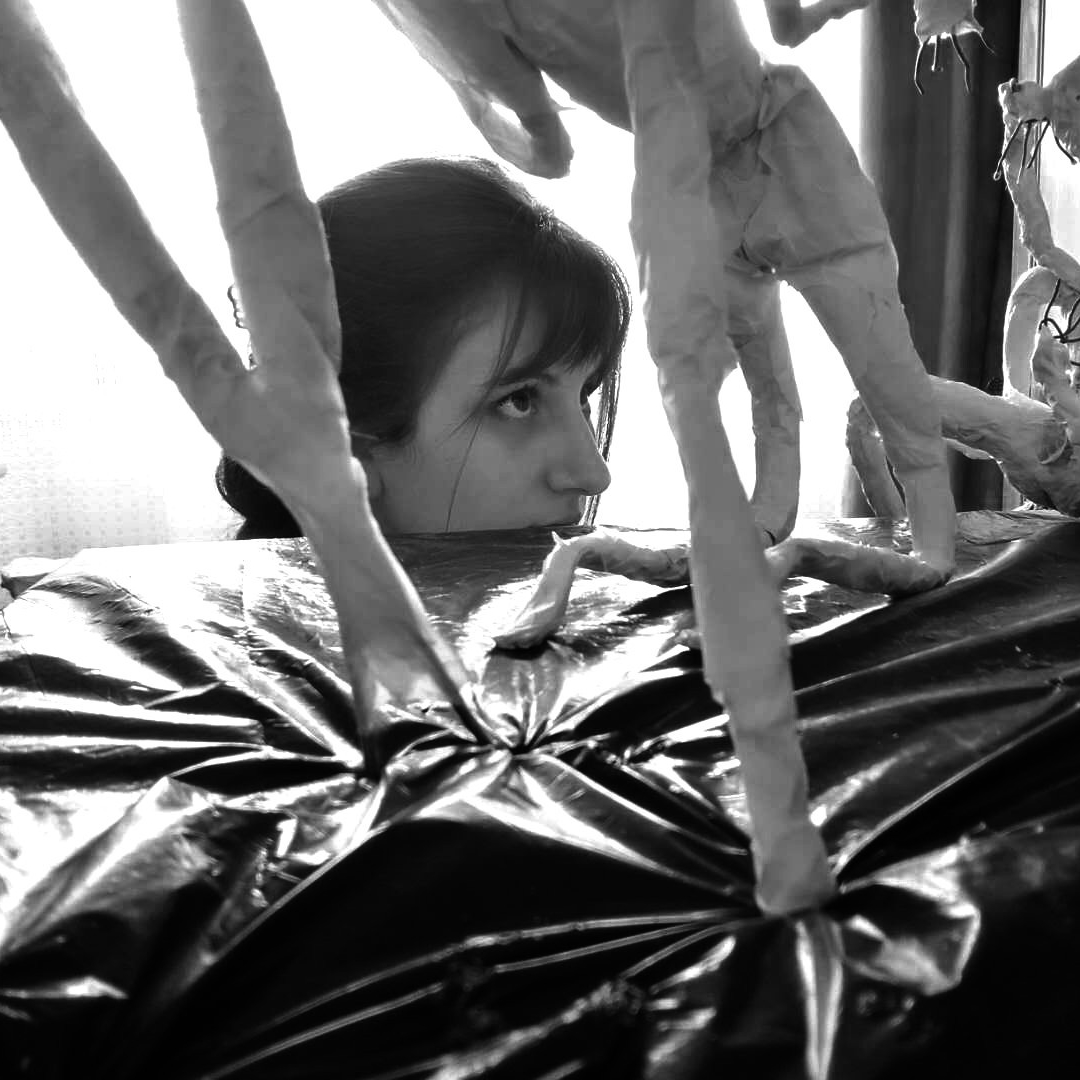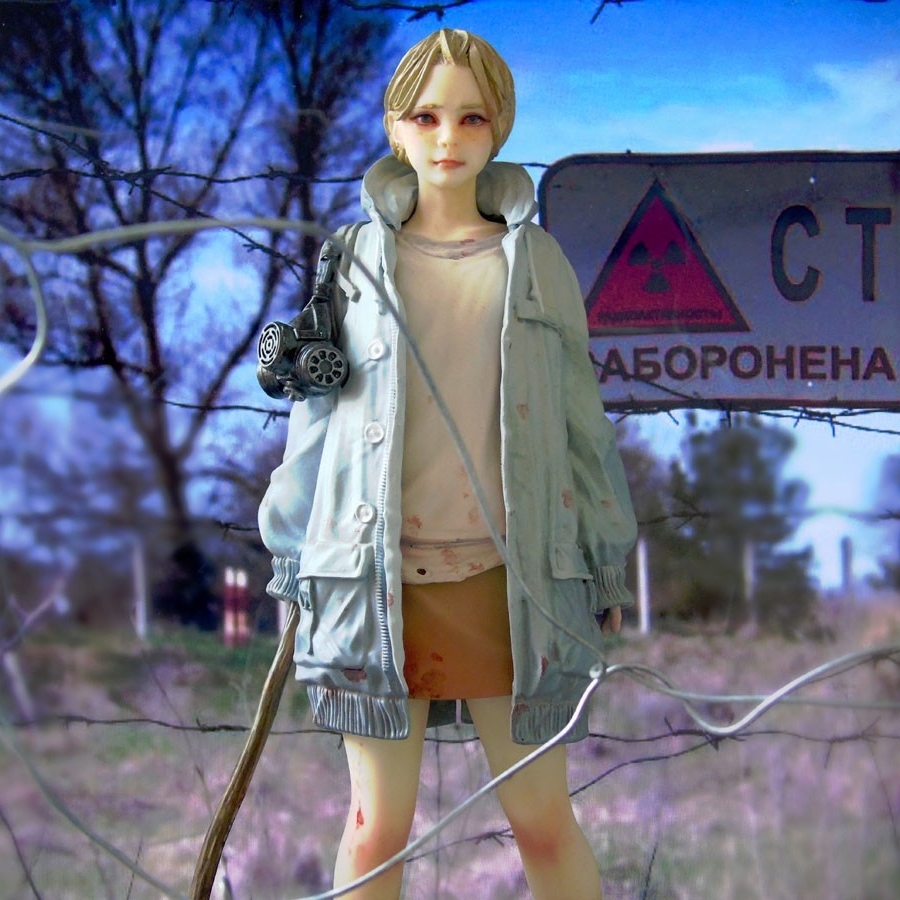
“My concept has been completely changed!”
“My previous pictures cannot be called photography!”
“If I don’t have any ideas for photography, then what is the difference between me and the elderly folk who carry cameras to shoot the sunset in Yuyuantan Park?”
“Photography” seems to revolve around our realistic life, but is that really photography? Why do our students comment on it like this? This online class is quite unusual as more than half of the students are auditors, many of them felt grateful that they “finally signed up for Mr. Wang’s class!” “By Means of Photography” was a popular selective course conducted by Professor Wang Chuan from the Discipline of Photography, CAFA School of Design. And what is the most worth mentioning is the short lecture video specially brought by Prof. Wang this time, this can make the audience experience such a popular “teaching classroom” without any restriction of time and space! So, what kind of photography class has made students change their minds? How to play with the seemingly “daily” but attractive expression? How do students from different majors such as painting, sculpture, design, and architecture create “using the form of photography”? Let’s find out.
 Wang Chuan
Wang Chuan
Professor of Photography at the School of Design, Central Academy of Fine Arts, PhD supervisor, Director of the Development Planning Office and International Cooperation and Exchange Office, and Head of the Future Image Laboratory of CAFA Visual Art Innovation Institute.
Online Teaching of “By Means of Photography”
The Concept of Curriculum
“By Means of Photography” has been open to freshmen from the School of Design for 15 consecutive years (it was interrupted due to various reasons). After collecting continuous feedback from students in the past years, it has gradually adjusted to become a broader fundamental training for goal setting. Since 2017, in accordance with the disciplinary caliber and construction plan of the CAFA’ “Double First Class” construction in the two disciplines of fine arts and design, this course has also been officially adjusted in 2019 to be an elective course for the second and third grades of CAFA undergraduates. It is aimed at enhancing the proportion of photography teaching in the basic teaching of subjects for undergraduates.
The course optimizes and adjusts the original basic knowledge, basic theories, basic skills, creative methods and creative practice ratios, assignment forms and requirements, and it further strengthens the undergraduates’ understanding of the production principles, media attributes and general laws of photographic media, as well as the overall recognition of general features and related questions about contemporary art and visual culture. It fully comprehends the rich creative possibilities contained in photography as an important part of the art disciplines. The course aims to help students establish a basic photographic knowledge system, through the experience of contemporary image production chain of “vision—idea—concept—image acquisition/production—post-processing—display and dissemination—reading interpretation,” and touches the thinking and creative modes based on images as the starting point, to improve the application level, stimulate the creative enthusiasm using photography as a method and finally improve the practical level.
Due to influences of the pandemic in 2020, the courses were changed to be taught online. Although the content of the course has not changed, the state of the class and some assignments were still greatly affected. I have made a more compact arrangement this time and the content allocation and assignment settings of the four-week course to ensure that the relatively dense knowledge points can be digested timely in practices.


View of Courseware


CAFA Elective Courses—The List of Elective Students and Teacher-student Communication Group—Teaching Group Announcement
The Composition and Goal of the Course
I insist that timely lecture and comment are very important, otherwise the failure of each unit to form a closed loop will seriously affect the ultimate achievement of the teaching goal. The course content consists of four parts:
1. Principles build the nature: through the technical framework and basic principles, it is to improve students’ comprehension and practical ability;
2. Nature determines the way: through the analysis of some typical photographic expressions and modes of action, it is possible to reverse the photography strategy;
3. The dimension of photography: the introduction is focused on photography as a medium that involves a wide comprehension, especially the possibility of combining it with the medium of text;
4. Topics of contemporary photography: through scanning and case analysis of contemporary photography, it helps students deepen their comprehension of the entire course content on the basis of a review.
The goal of the course is to lay a solid foundation for students to master the basic knowledge of photography, to understand photography and creative methods, and to improve their technical practice in varying degrees. At the same time, it provides a considerable overview on representative issues of contemporary photography.

The Way of Instruction
It is offered as an online course for the first time. The students have maintained highly concentrated enthusiasm and participation from the beginning to the end. Since the course is taught online, it provides great convenience for the students who are not successively selected to listen. Actually, the number of selected participants from auditors for this course is usually kept at 50% of the class. This situation is unlikely to be realized in offline teaching due to the constraints of space and actual classroom organization.

Statistics of Participation in Online Teaching

It must also be noted that although online teaching did not affect the content of the teaching and has made breakthroughs in scale and tolerance, it has had a significant impact on some training results, notably the team assignments of this course basically failed. We all have a certain degree of psychological preparation for this, but the practical effect is worse than we thought. In addition, because students’ communication methods, working conditions, methods and materials are greatly affected, the proportion of the online discussions has to be increased. Under such difficult conditions, the students still overcame the difficulties and tried their best to put their skills into assignments to complete their practices. This reflects their learning state and desire to learn, which is gratifying. These are expressed more directly and vividly in the feedback from the students. At the same time, the degree of divergence and contradiction of the students’ opinions on the online courses deserves our continuous attention and research.
Online Teaching Notes
According to an Interview with Prof. Wang Chuan
 Three-month online teaching gave me a preliminary understanding and experience of it. From the perspective of teaching, a lecture in this way has a more exaggerated feeling than it seems, which makes me miss the traditional offline teaching even more in some respects. If there is something that is beyond the reach of traditional methods, first of all it is the classroom capacity. According to traditional experience, I finally opened up 30 people for elective courses in CAFA. I think this is definitely the upper limit. However, from the statistics of the number of people attending the class, the average number of people attending the class is 46 per class and some of the students who are in the auditorium have participated in homework practice and class commentary. This has greatly refreshed my understanding of online teaching. If it is offline, this will directly generate corresponding requirements for teaching space. In addition, I have roughly estimated class reviews. The overall feeling is that if everything is normal using a shared screen, the efficiency will be higher than the offline method. Secondly, the feedback from the students told me that the online coursework is very convenient for memorizing every image in the course. It seems that taking class notes becomes easier. Therefore, we need to do more research on online courses, and we cannot make judgments based on simple imagination and simple phenomena.
Three-month online teaching gave me a preliminary understanding and experience of it. From the perspective of teaching, a lecture in this way has a more exaggerated feeling than it seems, which makes me miss the traditional offline teaching even more in some respects. If there is something that is beyond the reach of traditional methods, first of all it is the classroom capacity. According to traditional experience, I finally opened up 30 people for elective courses in CAFA. I think this is definitely the upper limit. However, from the statistics of the number of people attending the class, the average number of people attending the class is 46 per class and some of the students who are in the auditorium have participated in homework practice and class commentary. This has greatly refreshed my understanding of online teaching. If it is offline, this will directly generate corresponding requirements for teaching space. In addition, I have roughly estimated class reviews. The overall feeling is that if everything is normal using a shared screen, the efficiency will be higher than the offline method. Secondly, the feedback from the students told me that the online coursework is very convenient for memorizing every image in the course. It seems that taking class notes becomes easier. Therefore, we need to do more research on online courses, and we cannot make judgments based on simple imagination and simple phenomena.
The preparation time for online courses is much longer than previous offline courses. Specific to this course, because it is prepared along with the other two courses, it is impossible to calculate in detail. In total it is more than two months. At first it was because I was unfamiliar with online classes, so I didn't know what to do. Later, I discovered that the interactivity of online classes was actually very low in some aspects, which caused a lot of pressure in “giving lectures.” Another reason is that the adjustment to the courses every year has been enlarged this year with the online courses.
Advantages and Disadvantages of Online Courses:
The capacity flexibility of online courses is different from the offline format, which makes me admire;
Online courses make it easy for students to obtain first-hand coursewotk materials;
Once the whole screen recording is mastered, it is very convenient and safe;
It is more efficient to share the screen from time to time when various people switch;
But I still feel that this is not enough to make a huge improvement and bring a huge surprise. We must remain calm and reasonable when exploring the real advantages of online teaching and avoid problems.

 The communication efficiency of online courses is not as high as expected or not always very high. The dependence on network conditions makes many situations affect the quality of the class and the efficiency of communication. In addition, such a large-scale and lasting online teaching course is a new experience for both teachers and students. We still cannot ensure everyone’s concentration. The photography-based courses are far better than the other courses I have provided, and there are no obvious difficulties in the process. This is related to the preparation and commitment of both teachers and students. But it does not represent the general situation.
The communication efficiency of online courses is not as high as expected or not always very high. The dependence on network conditions makes many situations affect the quality of the class and the efficiency of communication. In addition, such a large-scale and lasting online teaching course is a new experience for both teachers and students. We still cannot ensure everyone’s concentration. The photography-based courses are far better than the other courses I have provided, and there are no obvious difficulties in the process. This is related to the preparation and commitment of both teachers and students. But it does not represent the general situation.
 Communication of the Curriculum Based on the Teacher-student Group
Communication of the Curriculum Based on the Teacher-student Group
Online teaching as a new trend, is what we must face and adapt to quickly. The challenge to teachers is greater than that of students. Because teachers need to master many new software operations in addition to giving lectures, the process before and after class becomes complicated and cumbersome. The personal experience of teachers, especially the on-site ability, is restricted to a large extent and it cannot be fully reflected when playing a role. The simple lecture also suggests more feedback on the course preparation. I understand and agree with a student’s representative course feedback: it makes me feel crazy. The mode of online courses is just a compromise to the pandemic, professional courses are not suitable for this model! So far, we have just experimented with online teaching. Both the advantages and problems need to be calmly thought through and rationally discussed, rather than being blindly frightened by them or rejected. And even the advantages of online teaching makes us become more aware of the irreplaceable value and significance of the face-to-face interaction in art education to a certain extent.
 Prof. Wang Chuan invited Liu Di and Shu Shanyi who are graduates majoring in photography to share their expressions
Prof. Wang Chuan invited Liu Di and Shu Shanyi who are graduates majoring in photography to share their expressions
We have never ceased dealing with new technologies and new media, so this is not a brand new problem but it also brings a series of new content and new problems from the level of technology and methods. College education and public aesthetic education overlap but are significantly different practical fields. Before responding to the question of “how to promote aesthetic education in the Internet age”, we need to rethink and re-define the identity and task, boundaries and objects of the college. Only on this basis and starting point can we clearly know what we should stick to and where we should make rapid adjustments when facing the rapid development of new technologies and new media, what changes have been made to our teaching target and what new requirements has this change brought.
“Photography brings about images, and the images in turn influence new photographic behaviors and even thinking.” The seemingly “simple” photography class has changed everyone’s perspective. This is probably the teaching and learning charm brought by a good class. The students attended this course come from different disciplines and schools and they know each other and learn from each other “by means of photography,” and they have injected their understanding into the creative approach. In addition, online classrooms seem to have broken the barriers of teaching. Teachers’ support for the auditors is also a manifestation of maintaining diversified and personalized teaching, just as the original intention of online courses is that “a good university has no walls.”
More than ten selected online classes have been shared through the scenes of teachers and students from various schools without time or space restrictions. The feedback and online discussions we received are also beyond our expectation. Please leave your comments if you would like to share anything with us about the online classes, the courses that impress you, or the professional courses of CAFA that you are looking forward to “snooping” on !
Courtesy of Wang Chuan and Students, edited by Zhang Yizhi
Translated and edited by Sue/CAFA ART INFO



